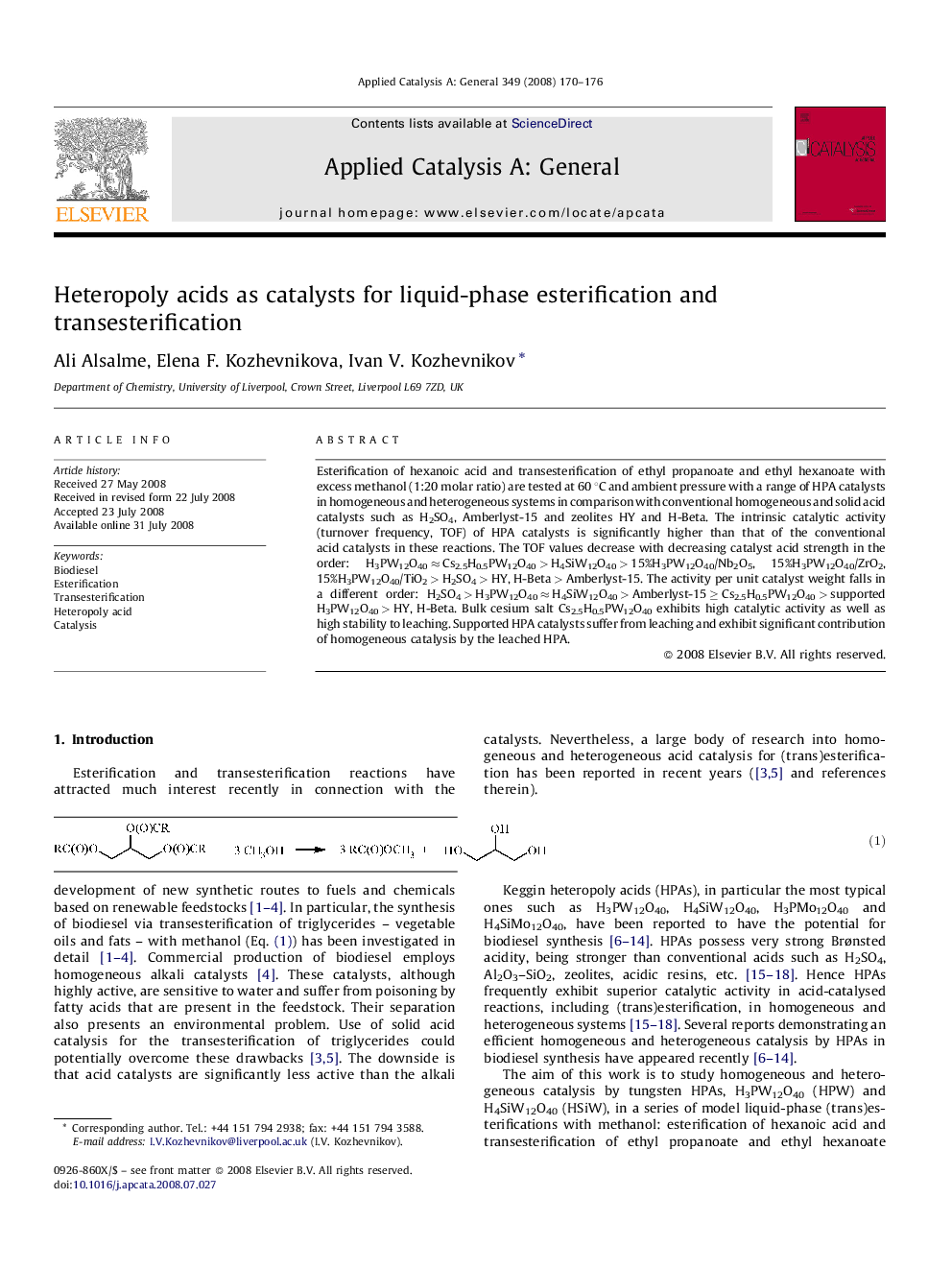| Article ID | Journal | Published Year | Pages | File Type |
|---|---|---|---|---|
| 42819 | Applied Catalysis A: General | 2008 | 7 Pages |
Esterification of hexanoic acid and transesterification of ethyl propanoate and ethyl hexanoate with excess methanol (1:20 molar ratio) are tested at 60 °C and ambient pressure with a range of HPA catalysts in homogeneous and heterogeneous systems in comparison with conventional homogeneous and solid acid catalysts such as H2SO4, Amberlyst-15 and zeolites HY and H-Beta. The intrinsic catalytic activity (turnover frequency, TOF) of HPA catalysts is significantly higher than that of the conventional acid catalysts in these reactions. The TOF values decrease with decreasing catalyst acid strength in the order: H3PW12O40 ≈ Cs2.5H0.5PW12O40 > H4SiW12O40 > 15%H3PW12O40/Nb2O5, 15%H3PW12O40/ZrO2, 15%H3PW12O40/TiO2 > H2SO4 > HY, H-Beta > Amberlyst-15. The activity per unit catalyst weight falls in a different order: H2SO4 > H3PW12O40 ≈ H4SiW12O40 > Amberlyst-15 ≥ Cs2.5H0.5PW12O40 > supported H3PW12O40 > HY, H-Beta. Bulk cesium salt Cs2.5H0.5PW12O40 exhibits high catalytic activity as well as high stability to leaching. Supported HPA catalysts suffer from leaching and exhibit significant contribution of homogeneous catalysis by the leached HPA.
Graphical abstractEsterification of hexanoic acid and transesterification of ethyl propanoate and ethyl hexanoate with excess methanol are tested at 60 °C and ambient pressure with a range of heteropoly acid (HPA) catalysts in homogeneous and heterogeneous systems in comparison with conventional acid catalysts such as H2SO4, Amberlyst-15 and zeolites HY and H-Beta. The turnover frequency of HPA catalysts is significantly higher than that of the conventional acid catalysts in these reactions. Figure optionsDownload full-size imageDownload as PowerPoint slide
